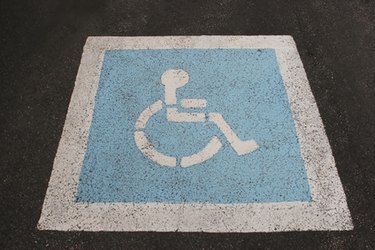
A well-designed ramp or lift can make a huge difference to a handicap's life by providing a measure of independence and increasing his quality of life. Although building a ramp or a lift is a serious undertaking that may require extensive planning and a building permit, it is a project you can often do yourself if you have basic carpentry skills. Even if you decide to pay a contractor to do the work for you, a good understanding of the project and a hands-on approach to the design will improve the functionality and suitability of your ramp or lift.
Step 1
Design your ramp or lift according to the person or people who will use it. Not all handicaps have the same needs. Ask yourself who will use it most of the time, will he use it with a wheelchair, a cane, crutches or with somebody's assistance and which route he will take most often. Do not let a contractor make all these decisions for you. You or the person you are installing the special access for are better equipped to make these decisions.
Video of the Day
Step 2
Design the ramp or lift access. Consider how the building, porch or driveway will have to be modified to allow for the modifications. Decide if a ramp or lift is more suitable for your project. Choose the right location and make sure you have the space to install the accessibility improvement you choose. Remember lifts need a strong and stable base to fix on. A ramp's slope must be at least 1 to 12, that is, for every inch the ram rises it must be 12 inches long. The maximum rise for a ramp, regardless of its length, is 30 inches and landings, and an inside clear width of at least 36 inches must be provided at the bottom and top of every run. If the user has a wheelchair, allow for elbow room, turning space, avoid the use of lips or small steps that could become a trip hazard.
Step 3
Cover all ramp surfaces with a slip-proof material or pattern. Install handrails on both sides of your ramp at a height between 30 and 38 inches. Treat all wooden and metal surfaces to avoid decay and rust. If you install a lift, buy a do-it-yourself wheelchair lift kit and fix it to your wooden or concrete base.
Tip
Local, state and Federal charity organizations offer financial help to qualifying applicants. Contact your local Easter Seal Branch, research government handicap assistance grants you may be eligible for, such as Assistive Technology Programs, Health and Humans Services grants and The National Institute on Disability and Rehabilitation Research.
Warning
Don't fall to the temptation of cutting corners when building your homemade ramp or lift. Your main priority is to help improve your life quality and mobility or that of the person you are designing the equipment for.
Video of the Day